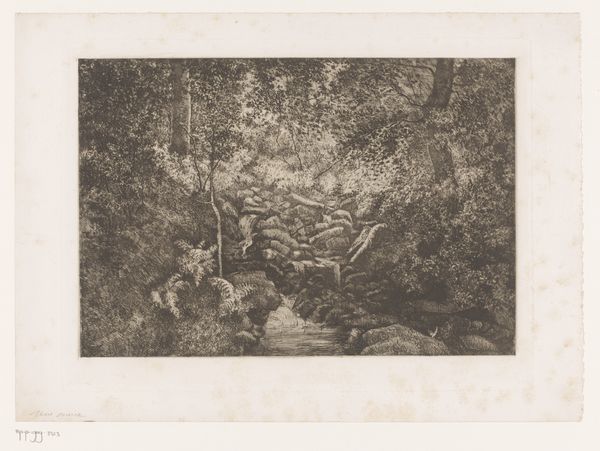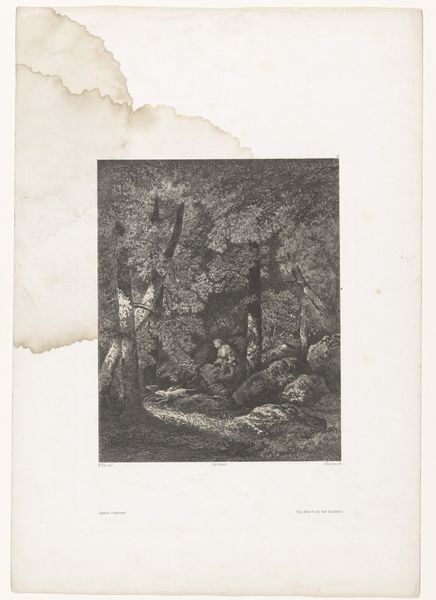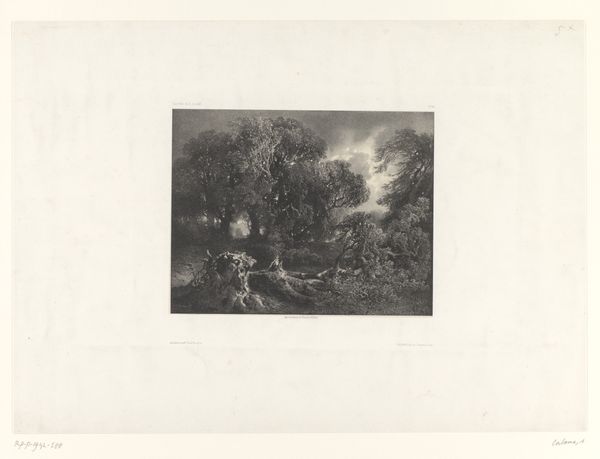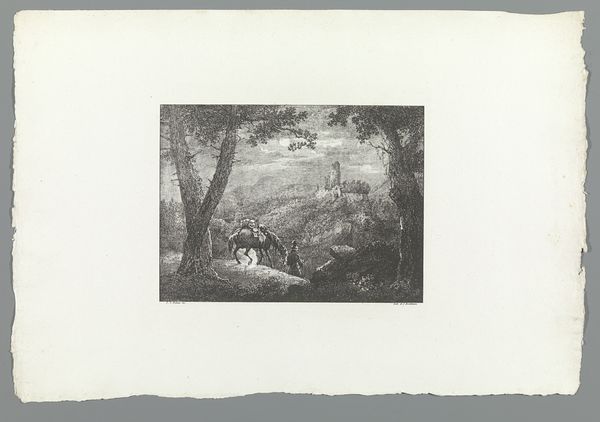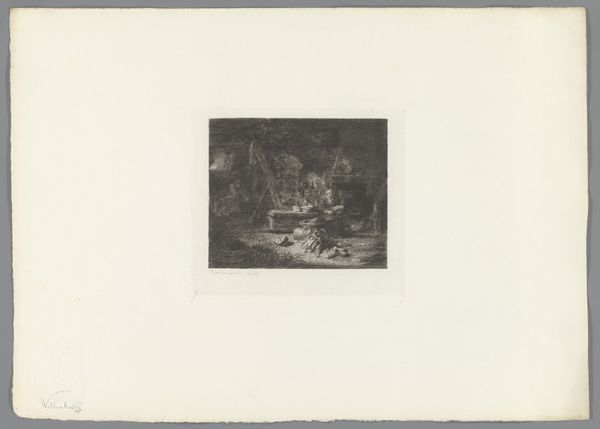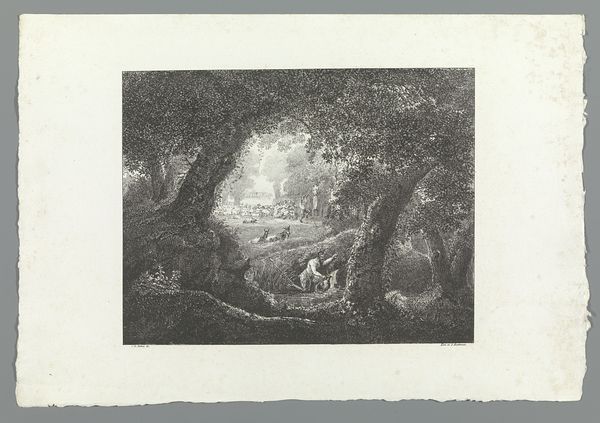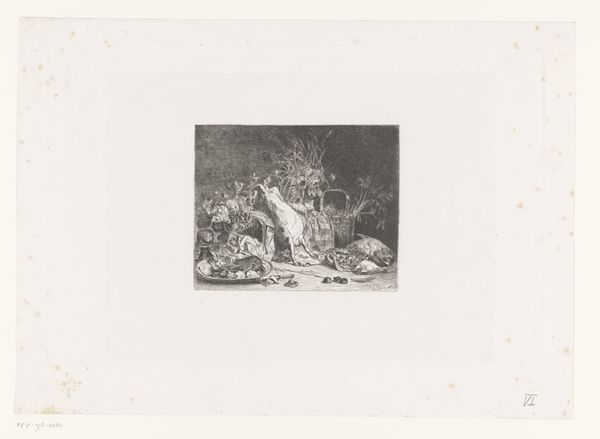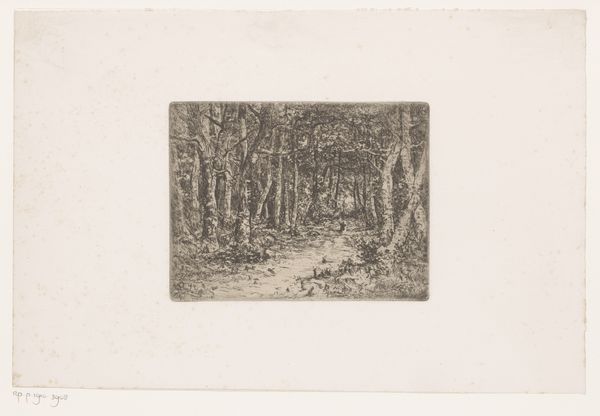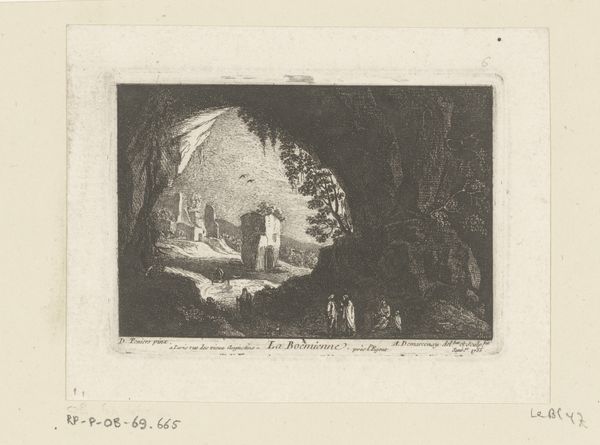
drawing, print, etching
#
drawing
# print
#
etching
#
landscape
#
watercolor
#
realism
#
monochrome
Dimensions: height 241 mm, width 316 mm
Copyright: Rijks Museum: Open Domain
Curator: Here we have Jules Guiette's "Bron van een beek in het bos," translated to "Source of a Stream in the Forest," created sometime between 1862 and 1901 using etching techniques to realize the print. Editor: Immediately, I notice how the contrast, so masterfully created through the etched lines, suggests a liminal space. It’s like stepping into another world, wouldn't you agree? Curator: Indeed. The stark monochromatic palette accentuates the formal interplay of light and shadow, guiding the eye. Look closely at how the density of lines coalesces to define depth and texture. Editor: Right, and historically, landscape art was really shifting, wasn’t it? Moving away from purely representational to something more evocative, more emotional, reflecting Romantic ideas of nature’s sublime power. How does Guiette fit into this, do you think? Curator: Interesting question. I think, in some ways, he's operating within those conventions. Notice, however, the rigorous organization of tonal values across the picture plane; Guiette displays a sophisticated understanding of how etching affects the distribution of light. He does more than merely record nature. Editor: I'm thinking about accessibility, too. Prints allowed broader audiences to engage with art, right? Forests were changing, becoming recreational spaces, and imagery like this shaped public perceptions and stimulated a particular fascination with them. Curator: That is quite relevant here, because he depicts a non-descript location. No imposing mountains, no iconic landmarks—just a simple woodland scene. Guiette zeroes in on universal visual tropes: light piercing a canopy, the murmur of water... These make his prints accessible to all viewers. Editor: Still, it's interesting to consider the narrative this imagery created and the kind of public it served. You might feel nostalgic and at peace seeing that landscape. Curator: A valuable thought. By restricting our sense experience, this black and white rendition highlights structural forms normally overlooked. Editor: In the end, appreciating this etching is not just about seeing the picture; it’s about tracing its impact and contemplating the dialogue between place, production, and perception. Curator: Yes. Understanding how that conversation translates into etched lines and light relationships for any given viewer.
Comments
No comments
Be the first to comment and join the conversation on the ultimate creative platform.
